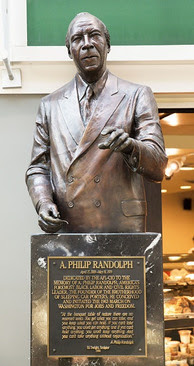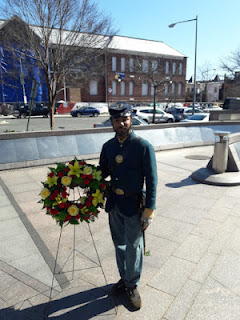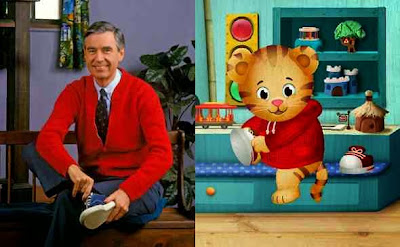 |
| Photo Credit: Harvard Business Review |
Monday, August 7, 2023
Anthropology and Marketing (by Johnny Coleman II)
President Jomo Kenyatta, Anthropologist (by Johnny Coleman II)
 |
| Photo Credit: Mount Kenya (World Atlas) |
 |
| Photo Credit: Bronislaw Malinowski (LSE) |
Malinowski made a career as a serious ethnographer and is called the 'Father of social anthropology.' When he met Kenyatta they became friends and he welcomed him because he wanted to support the work of an indigenous student and is quoted to say: “one of the first really competent and instructive contributions to African ethnography by a scholar of pure African parentage.” As an anthropologist who traveled and wrote about other people Malinowski was not part of the groups he wrote about like Kenyatta. During that time Kenyatta's work was revolutionary.
Jomo Kenyatta is one of the world's great anthropologists!
Thursday, August 3, 2023
A Pan African Community in Washington, DC (by Johnny Coleman II)
[This blog post was originally written and published in March 2020. It is presented to you as an example of ethnic marketing for the good. Images may be subject to copyright.]
A great example of ethnic marketing was demonstrated by the late Professor Hari Jones, the former curator and assistant director of the African American Civil War Memorial and Museum in Washington, DC. Every March 1st African Americans and Ethiopians gather to honor their African ancestry and identity with a wreath laying at the African American Civil War Memorial commemorating the victory of Adwa, Ethiopia on March 1, 1896.
Tuesday, August 1, 2023
The Brotherhood Of Sleeping Car Porters And Maids Changed America Forever! (by Johnny Coleman II)
[Portions of this article were originally published in 2017]
"At the banquet table of nature there are no reserved seats...And you can’t take anything without organization.”---A. Philip Randolph
 |
| Asa Philip Randolph Credit: Public Domain |
 |
| Sculpture of Mr. Randolph in Union Station in Washington, DC Credit: Public Domain |
 |
| Photo of Isabella Wilkerson Credit: Random House Publishers |
 |
| Book cover "From Superman to Man" |
Tuesday, July 25, 2023
The 'Re-Mix': A Vocabulary Lesson (by Johnny Coleman II)
 | ||
| Dennis Johnson (left), and Freedom Rider John Moody (right) Photo credit: AP Photo by Connor Radnovich |
Wednesday, July 19, 2023
"Why Tourism?," by Johnny Coleman II
People ask me how did I connect ethnic marketing and tourism?
The answer is anthropology. I visited archeology sites in Egypt, I interned in the Smithsonian museums---just to give you a glimpse. Over time these things transformed organically.
 |
| Photo of Howard University. Property of Getty Images. |
After graduating from Howard University with my degree in anthropology I focused on marketing to ethnic groups. I became an ethnic marketing consultant. To get started I worked for free and did it with joy because I love my work.
 |
| Photo of Chadwick Boseman. Property of Getty Images. |
Everyone has ethnicity. Some have a variety of ethnicity in their family. Ethnicity is not skin color. By applying my knowledge and skills in what is called cultural anthropology I was able to do proper research and build a real marketing campaign to reach an ethnic community. I also advised ethnic communities how to properly promote their products or services: festivals; books; and health campaigns. These things are important to know and do because if a person or organization does not understand the culture of a consumer or consumer group they will cause that person or group to hate their product or service by sending them the wrong message.
 |
| Photo of AMNH. Property of AMNH. |
 |
| Photo of Tyrannosaurus Rex. Property of AMNH |
 |
| Photo of J.A. Rogers. Property of the Public Domain. |
After graduating from Howard University I took my degree in anthropology and became an ethnic marketing consultant. I worked as a broker to market products and services about or for ethnic communities. This allowed me to travel and meet great people. Those times were like a training for my work today in tourism. I pursued promotions for ethnic groups whether I was paid or not.
Here is a short list of examples:
- Promotion of coffee farmers, and coffee from Ethiopia, Kenya and Haiti
- Successfully raised money for coffee farmers in Haiti to fight the coffee tree fungus La Roya
- Studied perma-culture design on an organic demonstration farm near Chicago, Illinois that was created to teach sustainability to people of African descent
- Celebrated sustainability and the environment at the Tesla showroom in Washington, DC
- Publicly observed the International Day for the Remembrance of the Slave Trade and its Abolition on August 23rd
 |
| Photo of Colonel John C. Robinson. Property of the Public Domain. |
Tuesday, July 11, 2023
"Going All-City: A Vocabulary Lesson," by Johnny Coleman II
"Going all-city is the same as branding."
---Johnny Coleman II






.jpg)


.jpg)


.JPG)



.jpeg)






